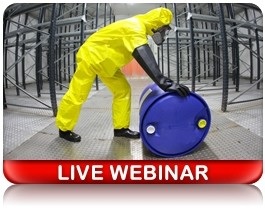Hazmat compliance. For some shippers, what is required for compliance can vary depending on their company’s point of view. On the one hand, compliance requirements can be considered tedious regulatory bureaucracy. But in today’s competitive economy, wherein efficiency counts, some shippers are taking compliance to another level and considering it a competitive edge. What made these shippers take this approach to hazmat compliance?
We can all agree that there are many more shippers than carriers. Hazmat carriers, due to the nature of the products they carry, are faced with the dilemma of offering a selective service to a market wherein safety demands are high. As a result, carriers are now becoming more selective in who they want to partner with. Why would a carrier tolerate dealing with a shipper who is disorganized and jeopardizes the carrier’s operation and possibly its reputation?
Hazardous materials are regulated and must be prepared and offered in a specific manner, and a lot of the responsibility hinges on the shippers. Shippers who offer hazardous materials must certify on their shipping papers that they are in full compliance with CFR Title 49, the Hazardous Materials Regulations of the Department of Transportation.
If shippers are careless or unaware of the specific requirements involved in shipping hazardous materials, their neglect will be problematic—not only from the economic aspect of delays and labor or time costs but also from the aspects of serious safety concerns and possible fines. Carriers cannot accept hazmat that is noncompliant, so how can carriers manage these extra costs and safety burdens? First things first: Eliminate liability by reviewing the safety risks. Carriers charge hazmat premiums to cover their legal responsibilities, such as personnel training and risk management, but also to offset their higher insurance premiums. So, it is in their best interest to ensure they deal with shippers who take full responsibility and know what they are doing.
Partnering with a potential shipper would be unwise if the carrier knew in advance it would be dealing with inefficiencies. The logistics of accepting hazardous materials are more time-consuming than for ordinary freight. Before accepting a load, a driver must:
- Verify the hazmat shipping papers are in order (this is an important role and requires specific training to understand the hazmat regulations and the details that apply).
- Ensure the packaging is properly marked and labeled.
- Verify the vehicle is placarded correctly.
- Ensure compatibility and that the load is blocked and braced correctly.
Shippers can attract carriers and develop a solid relationship with them by demonstrating that they take their hazmat responsibilities and the products they ship seriously. This involves making sure all is in order when the products are picked up and loaded.
The keys to a shipper’s success are the training and education shipping and receiving personnel get so they are completely comfortable and effective at their jobs. Frequent reviews and updates should also occur to ensure knowledge of the regulations is reinforced and any regulatory changes are considered.
Depending on which hazardous materials a shipper offers, there are a lot of regulatory specifics involved. By knowing which products are hazardous and consistently taking a serious approach to shipping them in full compliance, shippers will attract the best carriers and achieve a win/win situation for all parties.
 Robert Smith is CEO and senior instructor of CARGOpak Corp., based in Raleigh, North Carolina. He is a dangerous goods and hazmat specialist with more than 30 years of experience as a consultant, UN POP designer, and dangerous goods/hazmat training facilitator. Robert Smith is CEO and senior instructor of CARGOpak Corp., based in Raleigh, North Carolina. He is a dangerous goods and hazmat specialist with more than 30 years of experience as a consultant, UN POP designer, and dangerous goods/hazmat training facilitator.
Join Robert on Tuesday, November 19, 1:30 p.m. to 3:00 p.m. Eastern / 10:30 a.m. to 12:00 p.m. Pacific, for his live webinar, How to Become a Hazmat “Shipper of Choice” through Training and Logistics. By the end of this webinar, you’ll be able to:
|


